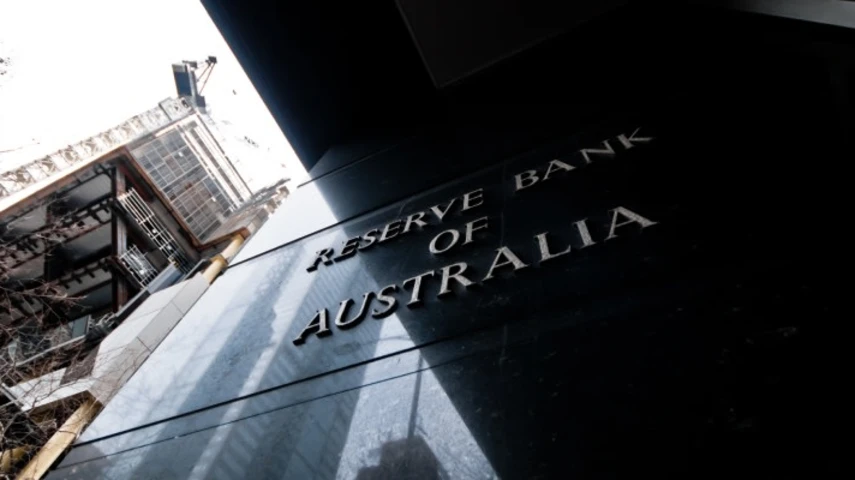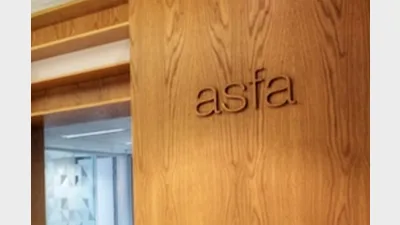Bullock cautions against market expectations of cuts amid global uncertainty



Governor Bullock took a more hawkish stance on Tuesday, raising concerns over Trump’s escalating tariffs, which sent economists in different directions with their predictions.
The Reserve Bank of Australia (RBA) kept the cash rate unchanged at 4.10 per cent on Tuesday, citing easing inflation but warning of global uncertainties, particularly from escalating US trade tensions.
In a brief post-meeting address, Governor Michele Bullock said the domestic economy is tracking as expected but warned that inflation remains a persistent challenge, noting that “the board did not explicitly discuss a rate cut” at Tuesday’s meeting.
She flagged concerns over rising international risks, acknowledging that policy unpredictability abroad could slow growth with unclear consequences for Australia’s inflation outlook.
“We’re not on our own,” Bullock said, highlighting ongoing discussions with global central banks to better understand the economic landscape in the year ahead.
The governor pointed to increased uncertainty in the global economy since February.
“A lot more uncertainty has been introduced in the international context,” she said. “What that means for us is not 100 per cent clear, but we are cautious.”
She cautioned that much will depend on how other countries react to escalating US trade tensions, stressing that the current wave of trade restrictions is likely to have lasting effects.
“We’re less exposed directly to the United States, so it does depend very much on what others do. It depends on reciprocal tariffs in other countries, it depends on what China does, then it depends on the implications of all of that on trade and supply chains,” Bullock said.
“Ultimately, fragmentation in world trade, less open world trade, isn’t great for Australia, because that’s how we’ve thrived … Provided China leans in and gives fiscal stimulus, we will see an impact on our GDP growth, but it won’t be as dramatic as for some other countries that are caught up much more directly in these large tariffs.”
Reiterating previous comments, Bullock pushed back against market expectations of near-term rate cuts.
“We’re not endorsing the market path,” she said. “We’re not disputing the markets, they have a particular view … I think our job is to be a little bit more cautious because we don’t want to let all the hard work we’ve done getting inflation down to get away from us.”
On inflation in particular, Bullock said the central bank is “gradually getting more confidence” that inflation is easing in the domestic economy but cautioned that risks persist, especially in the labour market.
She reiterated that while rates do not need to be within the target range for the bank to action a cut, the RBA remains wary of inflationary pressures.
“The labour market is one of them,” she noted, adding that the RBA still sees signs of “tightness in the labour market”.
The RBA’s post-meeting statement and Bullock’s conference carried a slightly more hawkish tone than in February, reinforcing that monetary policy remains restrictive and that any adjustments will be guided by economic data.
While inflation is moderating, in its statement, the central bank warned that risks remain “on both sides”.
“Many central banks have eased monetary policy since the start of the year, but they have become increasingly attentive to the evolving risks from recent global policy developments,” the RBA said, this it noted is mostly on the back of “recent announcements from the United States on tariffs”, and “pronounced” geopolitical uncertainties.
“These developments are expected to have an adverse effect on global activity, particularly if households and firms delay expenditures pending greater clarity on the outlook,” the RBA said.
Economists split
Vanguard senior economist Dr Grant Feng said the RBA’s decision to hold rates was unsurprising, with future cuts contingent on further evidence of weakening consumer demand and a sustained decline in inflation.
“Vanguard is not expecting any further rate reductions in Australia until the second half of 2025,” Dr Feng said.
He noted that Australia’s tight labour market and ongoing acceleration in government spending continue to keep pressure on interest rates.
“Expansionary public demand has offset the impact of higher rates on private demand and this trend is likely to continue, as indicated in this year's federal government budget,” he said, adding that ongoing global developments pose “considerable risks” to Australia’s economic and inflation outlook.
Ivan Colhoun, chief economist at CreditorWatch, agreed that a cut in May is now “less likely” even if first quarter CPI is favourable.
“The cautious tone continues the hawkish messaging from February’s rate cut, reinforcing scepticism over market expectations of 3-4 cuts this year. Two cuts remain the likely scenario unless external shocks arise,” said Colhoun.
Like Colhoun, HSBC's Paul Bloxham said he sees the statement as "slightly more hawkish than the February one", with the domestic story "almost certainly overwhelmed by the global uncertainties".
In his reading of the RBA statement, AMP’s Shane Oliver suggested the central bank was in fact “a bit more dovish” than was the case in February.
For him, the 20 May meeting remains ‘live’ for another rate cut, with the key factors being the March quarter CPI release on 30 April, escalating US tariffs under Trump, and the RBA’s updated forecasts.
“With trimmed mean inflation likely to come in below RBA forecasts, the trade war likely to escalate and the RBA likely to revise down its underlying inflation forecasts we expect another 0.25 per cent rate cut in May,” the chief economist said.
“Beyond that we expect another cut in August, taking the cash rate down to 3.6 per cent with another rate cut early next year.”
Similarly, the CBA said its base case is for the RBA to deliver a 25bp rate decrease at the May board meeting.
But unlike Oliver, CBA’s Gareth Aird said “there was no softening or hardening in the language around the economic outlook” in the central bank’s statement.
This, the big four bank’s head of Australian economics said, indicates “continuity between the former board and the new monetary policy board”.
Looking forward, Aird said: “We think that a Q1 25 trimmed mean outcome below the RBA’s 0.7 per cent/qtr forecast means a 25bp rate cut in May is a done deal.
“We continue to look for an end year cash rate of 3.35 per cent.”
ANZ, on the other hand, maintained its forecast for a “shallow easing cycle”, expecting a single rate cut, likely in August.
Its head of economics, Adam Boyton, said “the statement reads a little hawkishly relative to market pricing”, but added the timing of the next rate cut could shift based on Q1 inflation data, labour market conditions, and increasing global uncertainty.
Recommended for you
Equity Trustees has announced the appointment of Jocelyn Furlan to the Superannuation Limited (ETSL) and HTFS Nominees Pty Ltd (HTFS) boards, which have oversight of one of the companies’ fastest growing trustee services.
Following growing criticism of the superannuation industry’s influence on capital markets and its increasing exposure to private assets, as well as regulators’ concerns about potential risks to financial stability, ASFA has released new research pushing back on these narratives.
A US-based infrastructure specialist has welcomed the $93 billion fund as a cornerstone investor.
Qantas Super has officially merged with ART over the weekend, with its CEO describing the “bittersweet” decision as being in the best financial interests of its members.












